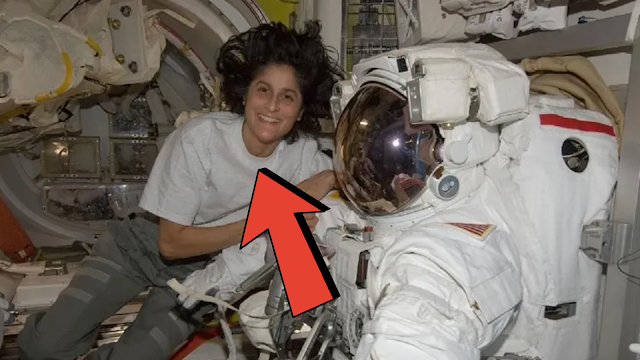A seemingly normal space mission has devolved into a frightening situation, with minimal media coverage despite its importance.
Sinita Williams, a NASA astronaut, and her colleague Butch
Wilmore are currently facing a lengthy stay in space due to unforeseen
technical challenges.
What was supposed to be a 10-day mission has now lasted more
than 50 days, raising fears about their supplies and the mission's future.
The Boeing CST-100 Starliner mission, which was expected to
represent a watershed moment for private space travel, has suffered a number of
delays.
The project, which was originally designed to demonstrate
Boeing's capabilities as a competitor to SpaceX, has been tarnished by
technical difficulties.
Following a successful launch on June 5, the Starliner
spacecraft docked with the International Space Station, ISS, as scheduled.
However, the anticipated return to Earth on June 26 was
postponed due to significant issues.
The principal concerns originate from the spacecraft's
repeated helium leaks and engine malfunctions.
On June 21, Steve Stick, the manager of NASA's Commercial
Crew Program, acknowledged the concerns.
He claimed that the mission team was working hard to correct
small helium system leaks and thrust to performance while following conventional
mission management procedures.
This circumstance highlights the difficulties that come with
adding new companies into the space market, especially when compared to
SpaceX's triumphs.
The CST-100 Starliner, built in conjunction with NASA's
Commercial Crew Program, was intended to transport up to seven passengers or a
combination of crew and cargo to low-Earth orbit.
Leo, which encompasses orbits at altitudes of up to 2,000
km, enables effective transportation, communication, and replenishment
operations.
The spacecraft's reusability, up to 10 times with a
six-month turnaround, was designed to make it a useful asset for future space
missions.
NASA's Space Shuttle Program terminated in 2011, requiring
private enterprises to step in and fill the hole.
SpaceX, led by Elon Musk, was the first commercial
enterprise to successfully transfer cargo and eventually astronauts to and from
the International Space Station.
Boeing's Starliner was supposed to follow in these
footsteps, but its introduction has been hampered by problems.
A countdown on May 6 was delayed just before liftoff due to
a defective pressure valve, with additional delays caused by a variety of
engineering issues.
Originally, the Starliner mission was intended to dock with
the ISS for eight days, allowing astronauts to perform research and
experiments.
Following this period, the spacecraft was scheduled to
return to Earth.
However, the endeavor has encountered significant
challenges.
Problems with the spacecraft's valve, which regulates
oxidizers used in rocket fuel, were discovered prior to launch.
This valve was observed to produce an audible buzzing sound,
indicating possible difficulties.
NASA discovered further issues during the voyage, including
a minor helium leak in the spacecraft's service module.
Helium is critical for rocket pressure maintenance and
spacecraft maneuverability.
Despite initial assurances, the situation deteriorated with
five helium leaks, malfunctioning maneuvering thrusters, and a partially closed
propellant valve.
According to Reuters, these shortcomings caused mission
management to spend additional time addressing faults during the operation.
The Starliner spacecraft can remain docked with the ISS for
up to 45 days.
Although the ISS contains measures for several months to
ensure the astronaut's immediate safety, continuous technological challenges
pose a risk.
If the situation does not improve, the astronauts may have
to return to Earth in SpaceX's Dragon spacecraft, which is currently parked at
the ISS.
NASA is contemplating a variety of contingency measures,
including an emergency return with the Dragon spacecraft.
However, the priority remains on resolving the concerns with
the Starliner in order to prevent jeopardizing future operations.
According to the BBC, a piece of the spacecraft's service
module will burn up during re-entry, perhaps resulting in the loss of key
information about what went wrong.
Sunita Williams and Butch Wildmore's extended stay in space
shows the challenges and risks associated with private space missions.
While Boeing's Starliner was intended to threaten SpaceX's
dominance in the American space industry, technical challenges have hampered
its progress.
The event highlights the importance of rigorous testing and
contingency planning in space flight to ensure the safety and success of future
missions.
x







No comments: